Speaker
Description
When the threat of a crisis formed, it transforms into the development of the crisis and when it moves into the phases of escalation, the spatial situation of the specific event area should be considered as an important influencing factor. The impact of the spatial situation is very individual for a specific area of crisis development, while maintaining many unifying elements of the nature of the impact also in different cases. Using the knowledges of a specific spatial situation, the crisis management staff prepares and makes decisions for predicting crises, limiting their development and escalation, as well as for the organization of coping processes.
In the last two centuries, the best-known documents of territorial knowledge were the cartographic materials of territories, which can be considered as the results of territory modeling in two-dimensional planes of the territory of the area in plans and topographic maps. However, at the same time, when it was possible, three-dimensional terrain models of the territories were also requested, created and used. Their creation was time-consuming and limited in use, but they offered well-presented and understandable territory models.
As digital technologies integrate with mapping technologies, the creation and use of three-dimensional terrain situation models began to improve and expand significantly, offering new opportunities for crisis management.
The development of modeling created opportunities for users to visually evaluate the situation of the area and its impact possibilities in a 3D view, to make accurate measurements and to use automated or semi-automated analytical functions on computers. The opportunities for crisis management to provide themselves with more complete forecasts and action justifications for decision-making increased. For monitoring the development of the situation, the use of modeling options offers a significant value of quality and timesavings.
Development of situation the use of three-dimensional terrain digital models in crisis management measures is in dynamic development. It is significantly limited by the requirements for safe and proven solutions, which today's developments, prototypes and capabilities cannot yet support with a large history of experience and safety testing.
However, when dealing with the integration of 3D models in crisis management processes, there is an intensive work of specialists in the development of specific solutions and safety tests of their use. These activities are also limited by the acute lack of availability of fully trained geoinformation specialists - a shortage.
Key words: Crisis management, cartographic, threedimensional models, 3D view, terrain digital models.
Armands Celms, Dr.sc.ing., professor, Department of Land Management and Geodesy, Faculty of Environment and Civil Engineering, Latvia University of Life Sciences and Technologies. Address: Akademijas Street 19, Jelgava, LV–3001. Email: armands.celms@lbtu.lv
Aivars Ratkevičs, Mg. sc. ing. Researcher, Lecturer at Department of Land Management and Geodesy, Faculty of Environment and Civil Engineering, Latvia University of Life Sciences and Technologies. Address: Akademijas Street 19, Jelgava, LV–3001. E-mail: aivars.ratkevics@lbtu.lv
Vivita Puķīte, Dr.oec., professor, Department of Land Management and Geodesy, Faculty of Environment and Civil Engineering, Latvia University of Life Sciences and Technologies. Address: Akademijas Street 19, Jelgava, LV–3001. Email: vivita.pukite@lbtu.lv
Miks Brinkmanis-Brimanis, PhD student at Department of Land Management and Geodesy, Faculty of Environment and Civil Engineering, Latvia University of Life Sciences and Technologies. Address: Akademijas Street 19, Jelgava, LV–3001. E-mail: miks.brinkmanis-brimanis@lbtu.lv

